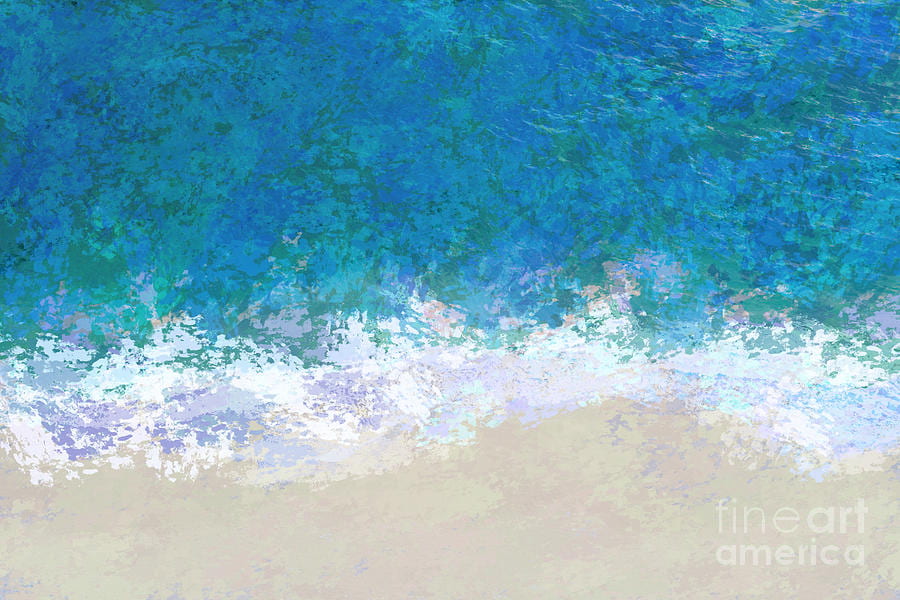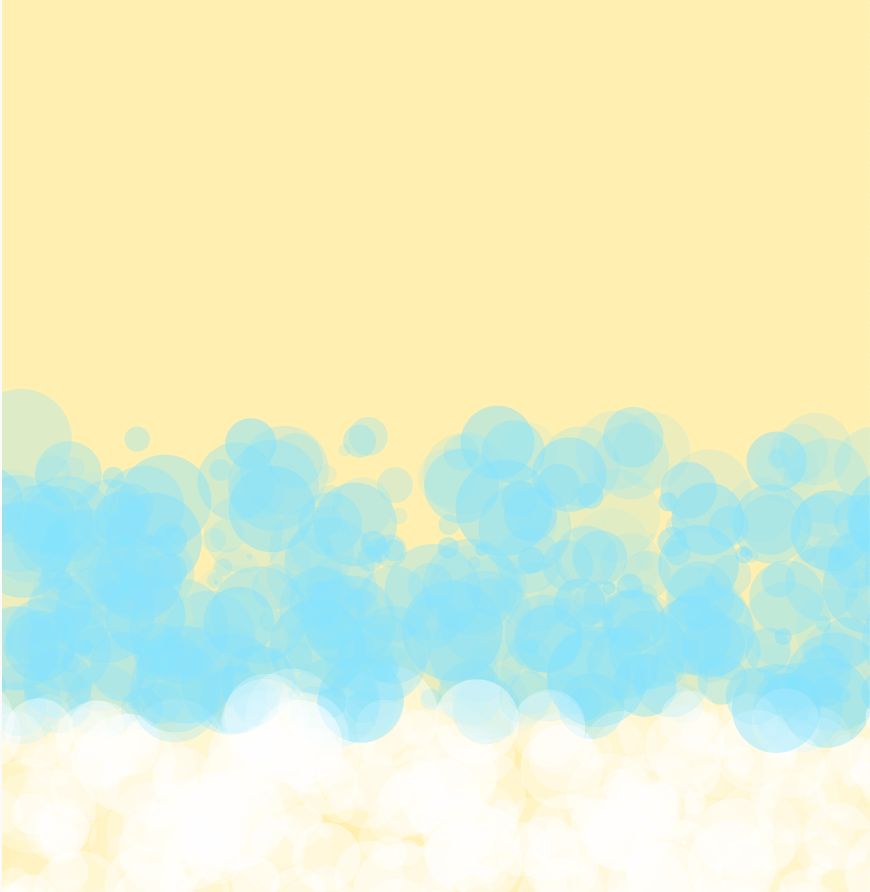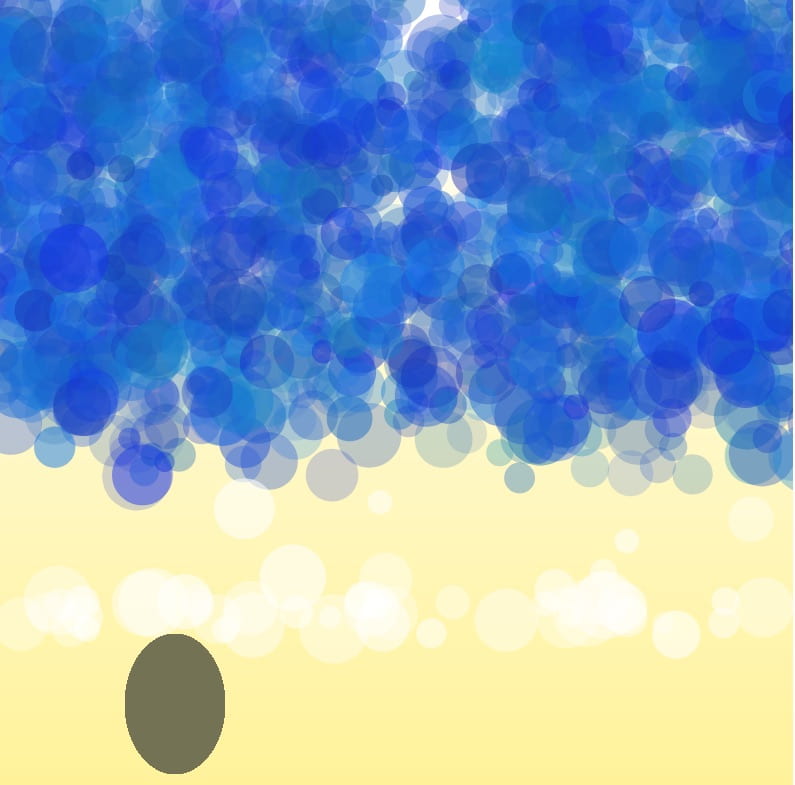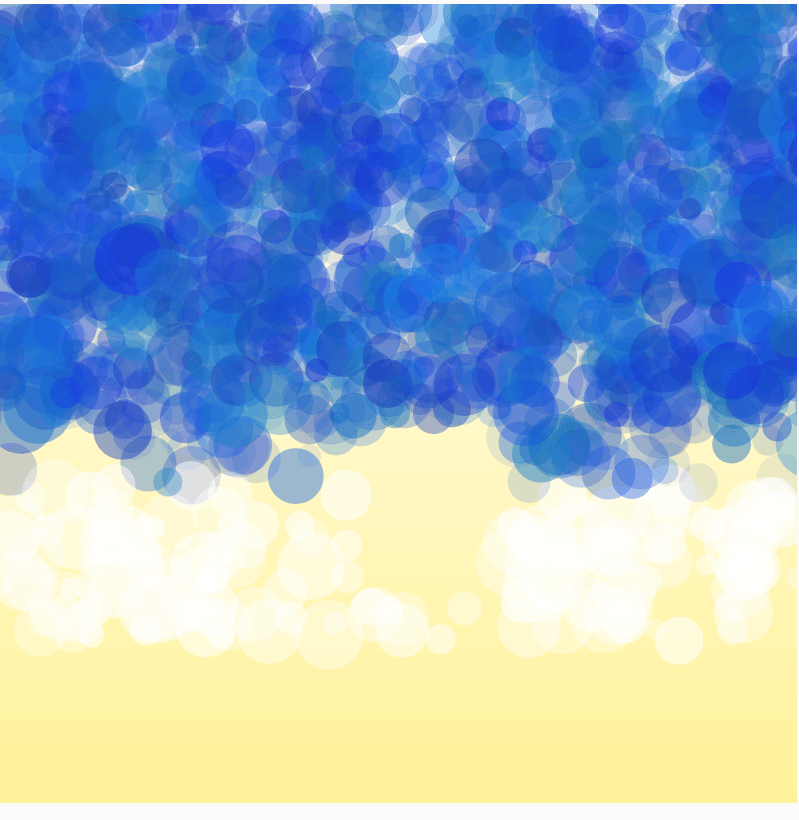TINA CHEN, SHORE : THE ROLLING OF THE TIDES
PROJECT DESCRIPTION
SHORE : THE ROLLING OF THE TIDES
2023
Interactive Art
ELEVATOR PITCH
Shore attempts to replicate the behaviors of rolling tides washing upon shore. The audience is not solely an observer of this natural phenomenon but also a participant who can interfere with the waves and the sand. Shore is a stimulation that seeks to magnify humanity’s role as an interference nature.
Crashing waves

ABSTRACT
Shore is a stimulation of human interaction with the tides that gets washed upon shore. Visualize the movement of the tides as it crashes on the sand, leaving a trail of foam as it disappears into the vast ocean. Try to step on the sand and the water with the clicking of the mouse. You will see that no matter what damage or change you’ve done will eventually by recovered by the natural world. It’s as if you’ve never took a step on that sand or interrupted the rhythm of the tides. As if you never existed at all. Like the sea foam left on shore and the footprint that disappeared, we humans are a temporary stay on this Earth as well. Forget about all the mistakes you’ve done, bad grades you’ve gotten, or the embarrassments you’ve had. The rolling tides of time will erase them for you so don’t you look back on them. In the end, we are erased from the natural world anyways.
Part II
1) Process: Design and Composition
My initial intentions were to draw the waves with vectors and lines and using circles as the foam. However, after encountering the following painting by artist D. TaoI soon realized that I don’t need defined lines to recreate waves. I can recreate an abstract wave with solid shapes of different shades of blue instead to add more depth to my water. I wanted my wave to be made up of wave particles that are of circular shapes and different shades of blue.

I then pondered on what form my wave particles should have and decided that circle was a better option than rectangles because I wanted to create the phenomenon of waves crashing on shore and leaving a trail of white foam. The transition of color from blue to white can be achieved by circles better than rectangles because foams are roundish. The user interaction of stepping on sand was achieved by using a not outlined ellipse filled in with a color that was close to that of a leftover footprint on sand. The effect of stomping into water was planned out to be that the water particles would repel from the area where the mouse lands out. At first I only created a single wave that kept moving on shore but it was not ideal because when the water particles moved back and forth between the ocean and sand there was a period of blankness in the art as shown below. 
My solution to this was to add another layer of wave particles underneath the moving wave and those wave particles will fill in the empty spots. I also designed the layer underneath with wave particles that moved back and forth so that it is not a static section of just blue circles. This step added more dimensions and layers to the waves.
For the repelling wave particles I tried both the mousePressed() and mouseIsPressed() and decided that the mouseIsPressed() is ideal because I want the repulsion to occurs the whole time while the mouse is being pressed down. A classmate (Rudy) suggested that to make the waves look more realistic I should try to have the white foam be a more solid white when the waves first come in contact with the shoreline and then fade to a more transparent foam so I played around with the opacity to create that effect. A fellow (Samantha) suggested that I should include the aspect of footprints on the sand as an additional interaction which I was able to accomplish by simply drawing an ellipse. This additional interaction really makes this piece more realistic.
Below are the main designs of Shore.
The crashing of the tides Sand Stepping Stomping into Water



2) Process: Technical
One technical issue that I had was the coloring the wave particles. I knew that I could achieve the different shades of blue with the color mode HSB but I was not familiar with the function so it was quite frustrating. I eventually solved this issue by just randomizing the shades of blue in RGB mode instead by finding out what ranges of r, g, and b the shades of blue usually lies on. Another issue was with the repelling of the water particles when the mouse is clicked. The particles were repelling in the right way but when the mouse is released they were not gradually moving back to their original spots. However, this was a problem that solved itself because the continuous movement of the wave particles was able to hide the empty spot left behind. This part can definitely be implemented better. I would really focus more on trying to figure out how to achieve the returning of the wave particles to fill in the empty spot left behind after the displacement. In addition, if I could do it again I would make the footprints created last longer and gradually fade away rather than immediately fading. Moreover, the transition of the waves into foams can be achieved better if the waves turned a lighter shade the closer it got to the shoreline.
3) Reflection and Future Development
In terms of visuals, I am very satisfied with what I have achieved. It is quite accurate to how I had imagined the visuals to be like back when I was brainstorming ideas. Rudy’s comment about the opacity of the white foam and Samantha’s feedback about adding footprints made a huge difference in terms of how realistic Shore became. I do wish that I had made the footprints have subtle disappearance rather than disappearing right away after the user stops pressing on the sand. In addition, the suggestion of having the waves turn from dark blue to light and then to the white foam was something that I hadn’t thought about and I think would definitely add a lot more to the visualization of the piece. In terms of interaction I would like to improve on the behavior of the wave particles after the user stops pressing on the water. While the movement of the wave particles makes the recovering of the empty spot easier it is still quite awkward that after the user pressed the mouse there are no wave particles in that spot other than the moving ones. Overall, I think Shore is quite a success because it did in fact fulfill my initial goal of replication a stimulation of crashing waves.
Leave a Reply